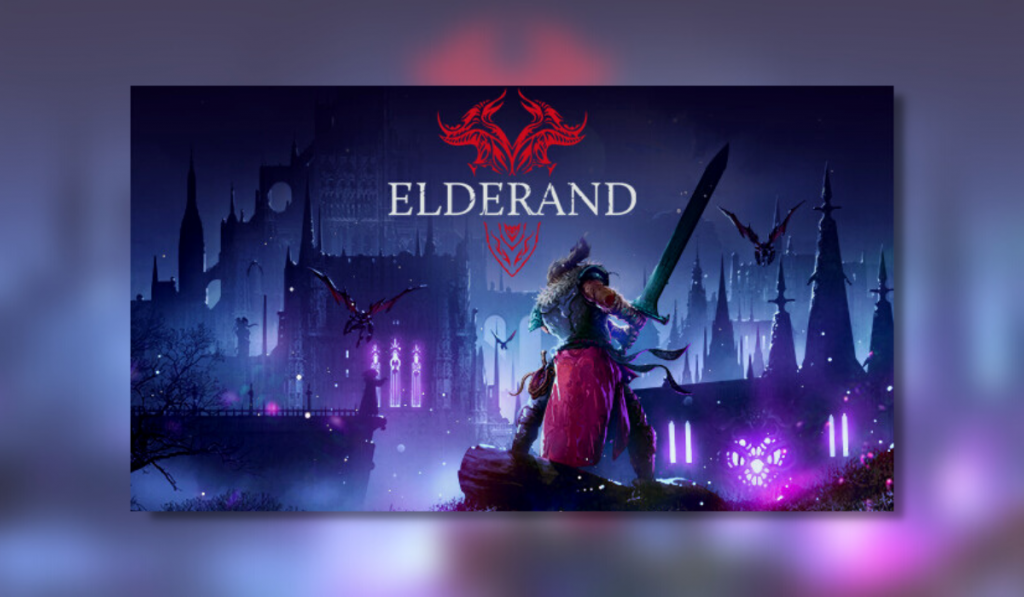
Titles like Blasphemous and Dead Cells brought the brutal challenge of the Souls series to the realm of Metroivania and proved to be quite the hit. Published by Graffiti Games, Elderand by Mantra and Sinergia Games is a pixel-art Metroidvania platformer/RPG that pits you against gruesome Lovecraft-inspired foes and terrifying bosses. While it doesn’t break new ground in the genre, it follows the formula solidly and ultimately provides an enjoyable experience.
You are an enigmatic mercenary, contracted to stem the tide of evil wrought by the cult of Sserthis. The realm of Elderand needs you. But your ship is doomed to sink and you have washed ashore with little more than the soaked clothes on your back. Using your skills and the weapons you source along the way, you must battle your way through an army of grotesque creatures and put an end to Sserthis and his zealots.
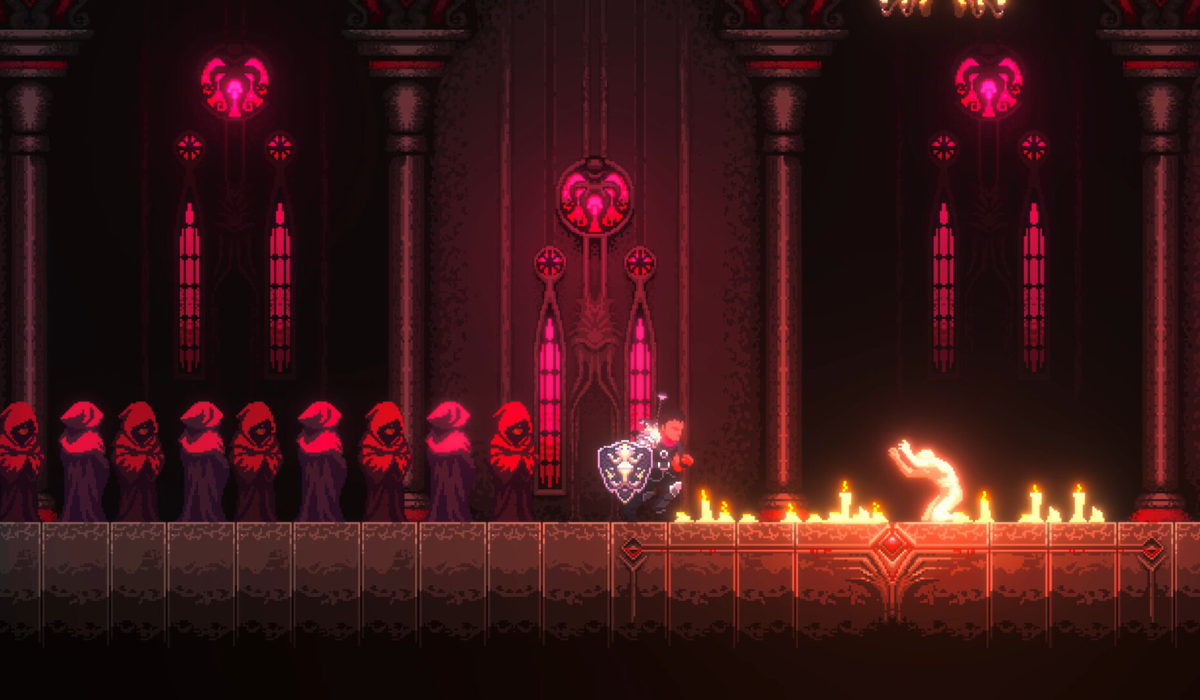
A Bloody Crusade
As is expected from Metroidvanias, the gameplay is definitely Elderand’s strong suit. Opening with limited but welcome character customisation, your mercenary has a choice of three options for age, hairstyle, hair and skin colour. On your journey, you can collect a wide variety of melee, ranged and magical weapons and mix and match them to suit your play style. Each has its pros and cons: quick but weak daggers, powerful but slow great axes, staves that unleash powerful magic and so on. Playing around with different combinations is certainly fun, but you will soon find your favourites.
Once you reach the village of Terrakan, these can then be upgraded with crafting materials at the blacksmith. Some of these can also create an array of potions via the alchemist. A classic RPG trope, however, it is difficult to pinpoint which enemies will drop certain crafting items—apart from those with distinct names. The drop rate of some items is also quite sporadic, which means you can end up spending far too much time grinding trying to obtain certain materials.
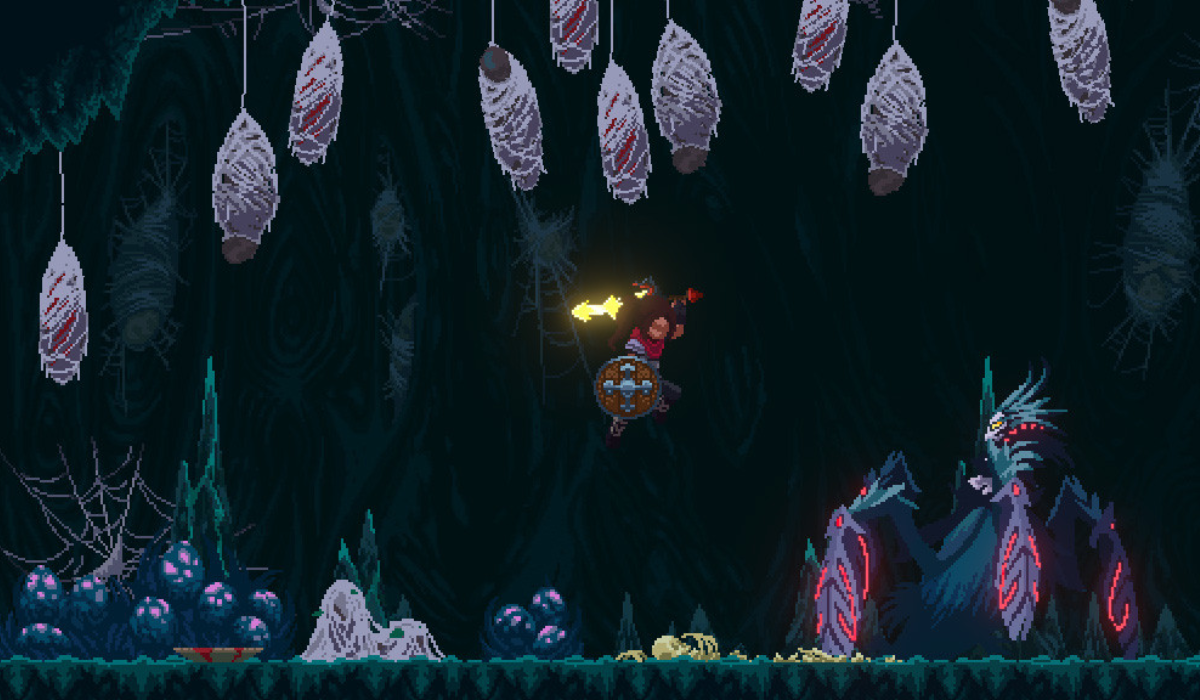
Thankfully, combat is slick and highly engrossing. Bloodily carving your way through an army of fantastical and Lovecraftian foes is very satisfying. Chaining combos and special moves (weapon permitting) with blocking or evading is key to survival. Being a key descriptor, battles are suitably challenging and enemies can easily end you in a few swipes if you’re not careful. But all have patterns that can be learned and exploited. More so than other Soulslikes, in fact, so it perhaps veers more towards the lite side of things. Soulslikes (and those in all but name) and I don’t get on, but I was repeatedly drawn back to Elderand. The level of challenge is personally just about right; many moments of frustration but still very fun and gives the rush of gratification in overcoming difficult trials.
With Metroidvanias, a high level of exploration is expected and this is executed nicely. A branching, non-linear map of eight unique areas is yours to explore with save point campfires nicely spaced throughout. Merchants and points of interest are also marked for you to return to. Another element I personally look for in Metroidvanias is a strong narrative underpinning the action; not necessarily epic or complex, but clear and always amplifying the action. Here is where Elderand falls rather short.
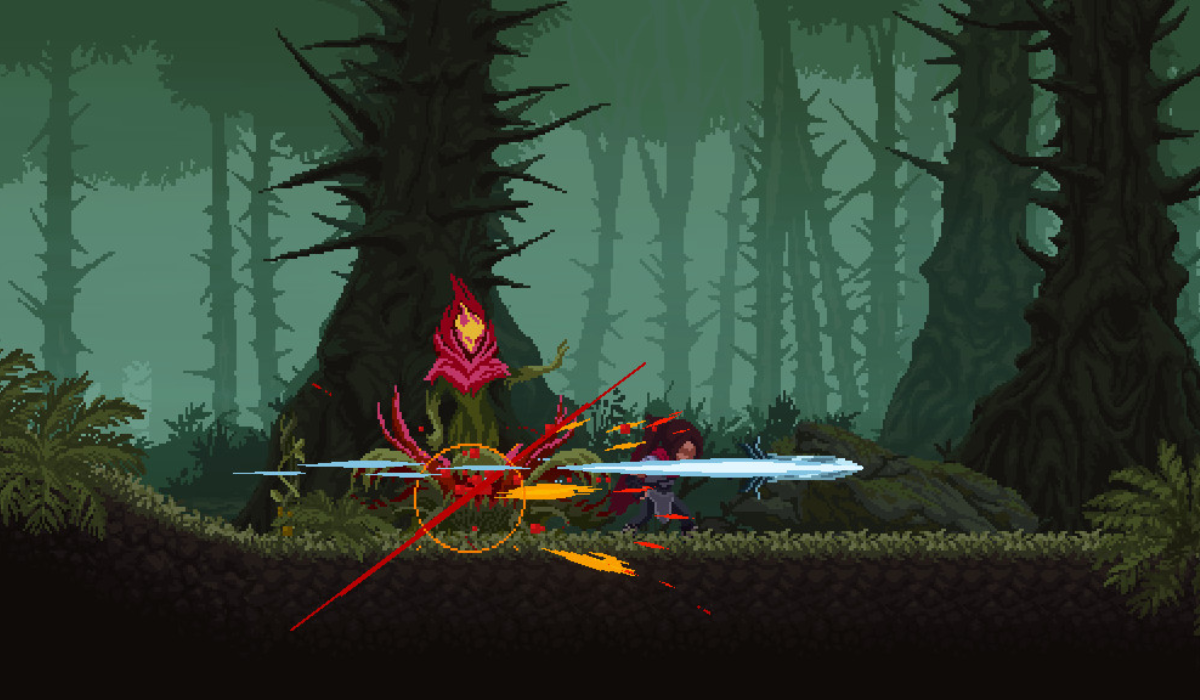
A Shadow Of A World That Was
Much of the story and lore is revealed through notes and diary entries peppered throughout the areas. These are well-written and give disturbing first-hand accounts of some of the events that lead to Elderand’s downfall. This also encourages exploring to find them all. But, in this case, this kind of environmental storytelling feels very detached. Why, when it can often work so well? Because there is a distinct lack of active immersion in the world of Elderand. Notes and scribblings give somewhat of an insight into the past, but next to nothing about the present.
Cutscenes are few and far between, giving only vague impressions through exposition dumps. There are also no quests or tasks to complete. It’s not especially clear what this heinous cult is trying to achieve or how you as the player are affecting that. Or even what you’re exactly out to do on the whole, besides slicing and dicing. Crafting and upgrading will tempt you back to Terrakan, but it’s easy to miss talking to the key NPCs in the heat of the action. And this, in turn, can lead you to miss weighty plot points and significant battles. But with little active connection to those characters, the significance is very much diminished.
Caverns, Catacombs And Cultic Chants
Most pixel art games tend to be either gritty and crunchy or smooth and sleek with their visuals. Elderand does both. This may be jarring for players who prefer a singular design, but if you’re simply all about the pixels like me, then you’ll be more than satisfied. Backgrounds and locales are vibrant and detailed, from fallen cities to eldritch temples. The sprites and animation are equally impressive. The player attack animations vary depending on the gear equipped and even just visually, you can feel the weight or speed of a weapon. Not to mention the vast roster of grotesque horrors pitted against you; from gargantuan black knights to plant-ridden zombies, the detail is remarkable. Even when saving at campfires, a different form of meat appears on the spit every time—an amusing little aspect.
The sound design is likewise solid. Each of the 8 world areas has a fitting theme, ranging from fast-paced melancholic organs (a la Castlevania) to steadily pulsing drums. The boss themes are sadly limited to just one for all, but it is exceedingly rousing. You’ll be all fired up to take down a ferocious big bad. Some sound effects can become a little grating after lengthy repetition but are decent for the most part. A nice touch is having a different tone to the character’s voice reflecting what age you chose. Little things like this are always a plus.
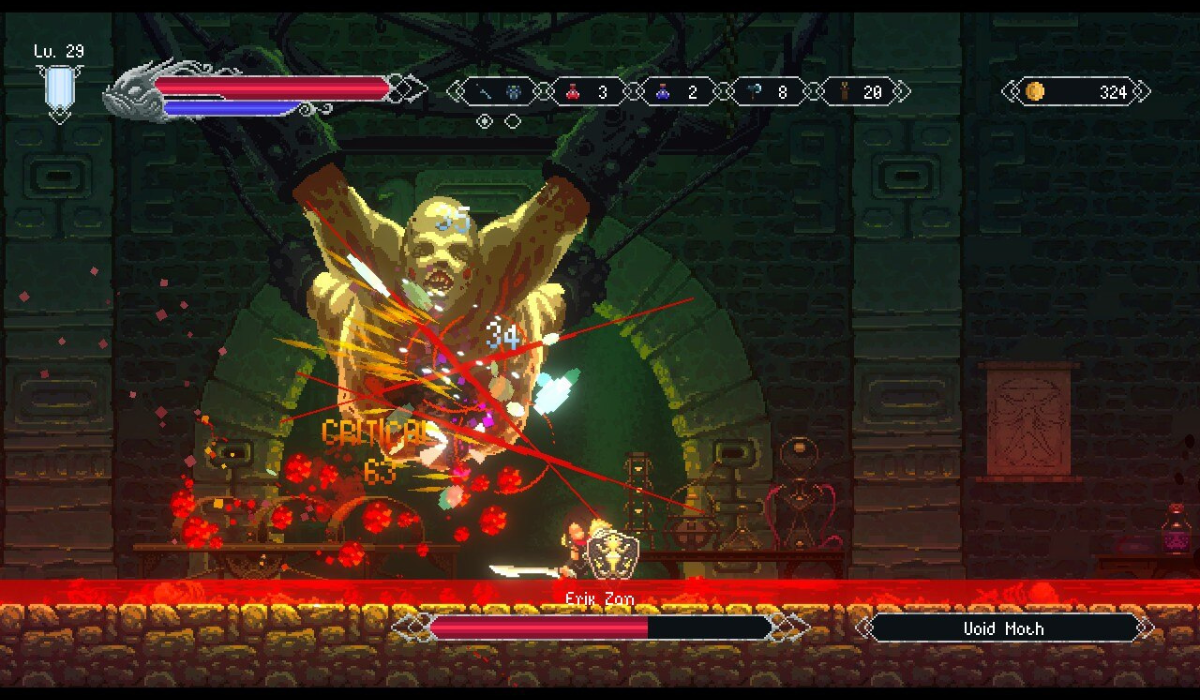
Battle-Hardened Or A Slow Build
Like any game that flirts with or fully embraces Soulslike aspects, the length of the Elderand experience mainly depends on skill. For seasoned veterans or quick studies, 100% map and story completion can be managed in around 5 – 6 hours. A no-frills run can be done in much less. For achievement hunters, fans of the grind or not-so-quick studies (like myself), it can take closer to 8/9 hours. Some achievements will definitely stretch the play and grinding time out. Firmly into double figures if you also opt for another playthrough to explore thoroughly and seek out those extras.
On The Whole
If you’re looking to lose yourself purely in Metroidvania battling, Elderand has got you covered. Absorbing and enjoyable, it will certainly slake your thirst for skill-based, challenging combat and varied foes. Also, it’s a nice shallow pool if you’re looking to dip your toes in Soulslikes. However, if you’re after a more fully rounded RPG experience with an active, cohesive role in the story, you may wish to seek elsewhere, mercenary.
A solid Silver Award for this challenging caper. With a few chinks in the veneer from claw, tooth and sword.

Disclaimer: A code was received in order to write this review.

YouTube | Facebook | Twitter | Instagram | Discord | Podcast
